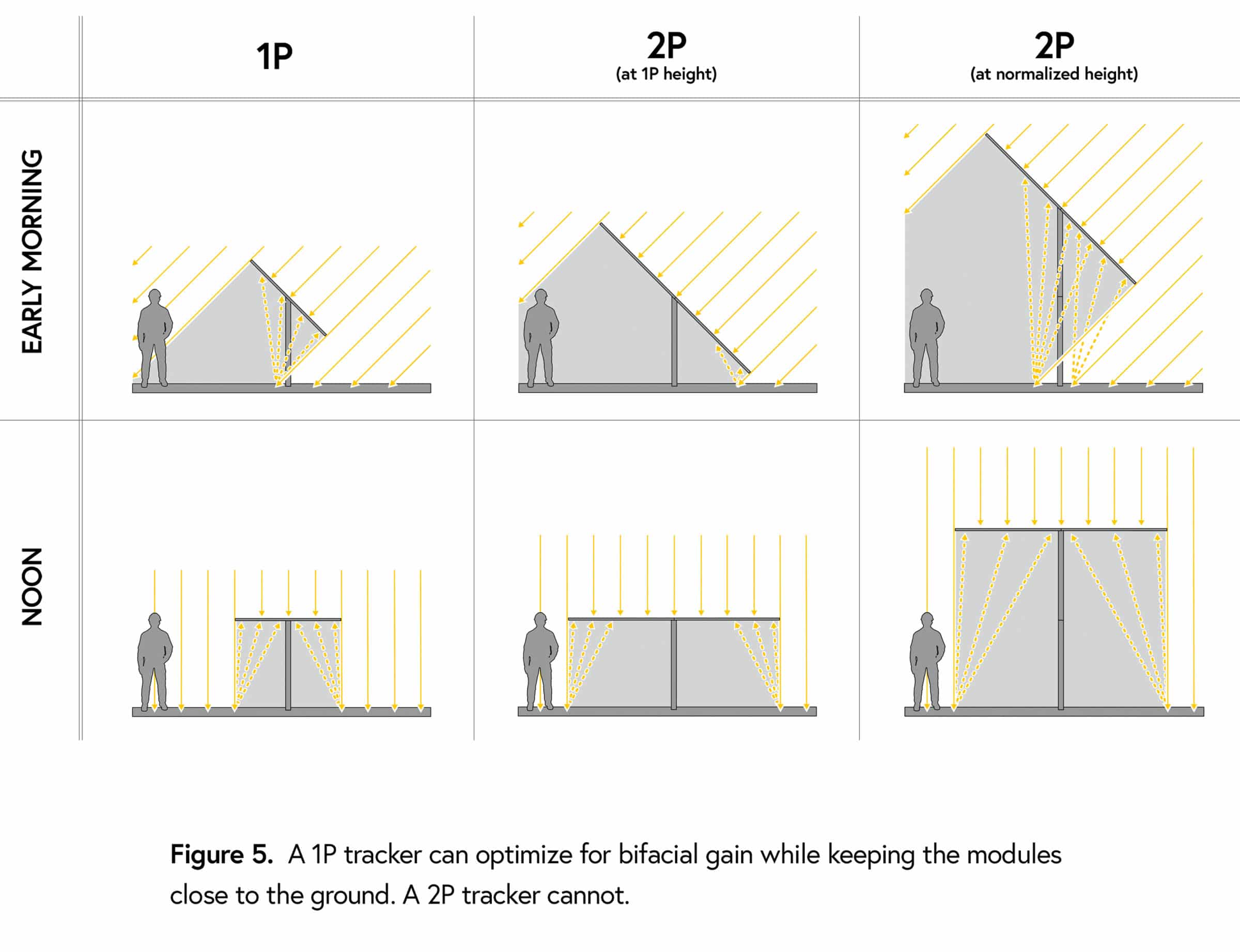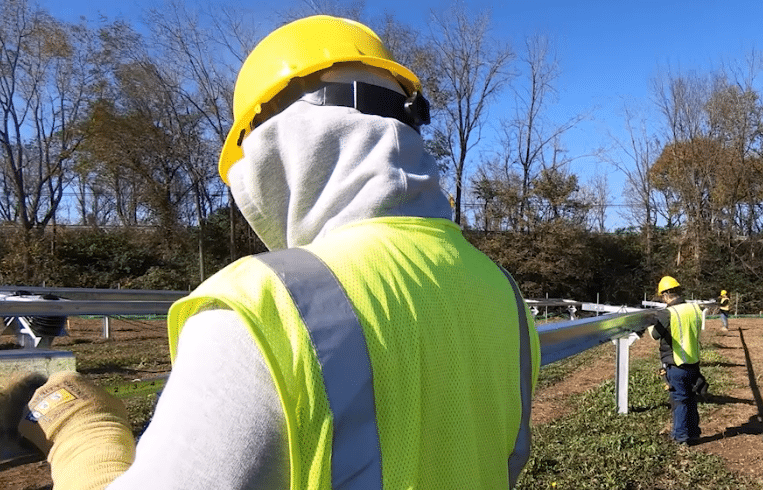By Matt Schneider, chief product officer at Sunfolding

Solar is a highly specialized industry bringing together many different skills in pursuit of a common goal, improving project performance.
Researchers test exotic polymers and semiconductor materials in search of double-digit efficiency gains. When module manufacturers commercialize a single-digit improvement, they circulate press releases to ensure that everybody knows. Meanwhile, seasoned observers keep their cool until a new technology is ‘in the ground.’ It’s safe to say that bifacial solar is officially in the ground. But questions remain about how to capture the technology’s full potential.
The important determinants of bifacial gains are location, albedo, ground coverage ratio (GCR), mounting height, and rear-side shading. In Sunfolding’s analysis, one of these topics stands out. As our bifacial team recently presented the findings from system performance modeling, the implications for mounting height were stunning.
For any tracker system, optimal performance in a two-portrait (2P) or two-high configuration, the tracker axis would have to be over 9 ½ feet off the ground.

There are several reasons why EPCs tend to avoid such an extreme mounting height. Increased height dramatically increases construction cost, adds complexity to a solar asset’s risk profile, and makes operations and maintenance more challenging.
These facts led Sunfolding to the conclusion that 2P is rarely if ever the best configuration for bifacial projects.
Lambert’s cosine law
Bifacial gain is a function of mounting height. As a general rule of thumb, a module mounted higher off the ground gets better back-side performance. (For an in-depth look at the factors that affect bifacial performance, see the Sunfolding white paper Knowledge Is Power.)
At its most elemental, bifacial solar operates according to a principle in optics known as Lambert’s cosine law. Named for Johann Heinrich Lambert, who introduced the term albedo and established the concept of perfect diffusion in the mid-18th Century, Lambert’s cosine law defines an ideal diffusely reflected surface and says that the apparent brightness of a Lambertian surface is the same when viewed from any angle.
Because the ground generally represents a Lambertian surface, the modules must be mounted high enough for reflected light to reach the module back-side evenly. In a one-portrait (1P) configuration, a bifacial module sees diminishing returns once you increase mounting height beyond 5 to 6 feet off the ground.
Customers have been asking about bifacial arrays by using a two-portrait (2P) configuration, so Sunfolding’s utility and large commercial project team wanted to know, “What does the mounting height analysis mean for 2P projects?”
Since uniform back-side irradiance is key for bifacial gain, when you increase array width, two things can happen. Either you keep the array low to the ground and accept a reduction in back-side irradiance, or you raise the entire array high enough to mitigate rear-side mismatch losses.
In a 2P configuration, bifacial modules have to be over 9 ½ feet high to mitigate rear-side mismatch. In a side-by-side comparison, 1P projects outperform 2P projects at all heights below 9 ½ feet.
Stay close to the ground
At this point, one has to ask some questions about the tradeoffs involved in maximizing bifacial gain.
- Given that EPCs are generally accustomed to a tracker axis height of about 5 feet and below, how would the construction process change if you double the tracker axis height?
- How would a higher mounting height impact project completion times?
- What is the impact on racking, tracker design, and tracker material requirements for a system designed to be as wind-resistant and robust at 9 feet as it is closer to the ground?
- As a share of total system output, how much additional energy must the back-side of the array produce to be considered a good investment?
- How do the variables affecting bifacial gain affect net gain?
For a 2P project to improve project performance, the net energy gain would have to outweigh the added costs for construction and O&M and longer project timelines. It remains to be seen if that’s possible. Until then, we recommend flying lower to the ground as we continue to drive down project costs and aim for better overall performance.
The views and opinions expressed in this article are the author’s own, and do not necessarily reflect those held by pv magazine.
This content is protected by copyright and may not be reused. If you want to cooperate with us and would like to reuse some of our content, please contact: editors@pv-magazine.com.








I would love to get a couple of these two faced panels and mount them 90° to ground facing east and west! Granted mounting them without shading will be a challenge. But I guess you could use wire cabling to stabilize the top…
Bruce, I believe one of the N.A. trades reported on a system in Germany mounted this way and it is an interesting idea, but cosine effect on a vertical panel has to be balanced against late day/early morning production in an overall evaluation. In NY, this would hit one’s ICAP as well I expect.